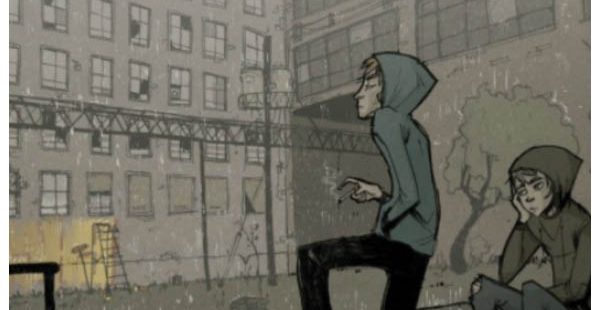
CPTED CONCEPTS AND MEASURES FOR CRIME PREVENTION
-
-
-
-
- Surveillance
- Access Control
- Territorial Reinforcement
- Maintenance
-
-
-
This month I will explain CPTED and why it is the foundation to all crime prevention efforts. I was introduced to CPTED while working as a police officer in Mesa, Az. I worked in many different specialty units but the one job I enjoyed the most was working as Community Action Team officer (CAT). From this spot I worked crime prevention, drugs, gangs, stolen cars, homicides, burglaries, robberies, etc. Because of the nature of certain neighborhoods the officers who took on these projects were highly trained in all aspects of not only prevention but enforcement of laws.
I was trained by the Mesa Police Department on Problem Oriented Policing which included Crime Prevention Through Environmental Design. For over 30 years I have been practicing CPTED principals in all my crime prevention efforts. I recently received my ICCP-Advanced certification. This is the International CPTED Association Certified Advanced CPTED Practitioner. I am now 1 of 10 people in the world to have the necessary education and experience to receive this designation of Advanced CPTED Practitioners. Crime Prevention Through Environmental Design (CPTED) is defined as a multi-disciplinary approach for reducing crime through urban and environmental design and the management and use of built environments. CPTED strategies aim to reduce victimization, deter offender decisions that precede criminal acts, and build a sense of community among inhabitants so they can gain territorial control of areas and reduce opportunities for crime and fear of crime. CPTED is pronounced ‘sep-ted’ and it is known around the world as Designing Out Crime, defensible space, and other similar terms.
Law enforcement alone cannot effectively resolve social, economic, and physical factors that make neighborhoods less safe. Asset mapping is the most effective way to get “Community-wide” help and recommendations to make our communities safer. When used properly and with cooperation, the community health will be enhanced. One of my projects as a police officer in Mesa, Az was to work with our community as a Community Action Officer to promote crime free living spaces and businesses. In order for me to accomplish the objective of reducing calls for service in a particular area I needed to employ the help of the property owner, tenants, and city services to solve the problem. Understanding that law enforcement will not be able to solve the problem of crime in and around our built environments, we will be better able to take CPTED off the shelf as a theory and put it to work in the field. That is what I am doing with Michael Mercer Consulting LLC. My projects all start with me using the SARA model of Problem-Oriented Policing. The SARA model is a decision-making model that incorporates analysis and research, tailoring solutions to specific problems, and most importantly, evaluating the effectiveness of those responses.
The acronym SARA stands for:
- Scanning: Identifying, prioritizing and selecting problems that need addressing using both data from police and other sources as well as community and citizen input.
- Analysis: Deeply analyzing the causes of the problem, including the underlying causes of repeated calls for service and crime incidents.
- Response: Determining and implementing a response to a particular problem. Ideas for responses should be “evidence-based” when possible or at least tailored to the specific problem at hand using general principles of good crime prevention.
- Assessment: Often the most ignored part of the SARA model, this requires assessing and evaluating the impact of a particular response and being willing to try something different if the response was not effective.
Broken Windows
James Wilson and George Kelling developed the Broken Window Theory in 1982. The broken windows theory is a criminological theory of the norm-setting of urban disorder and vandalism; increasing crime and anti-social behavior. In short, when we see things broken or dilapidated, it is perceived that no one cares or is looking after it with any sense of ownership; thus, it is okay to further cause damage or violate the area/community without repercussions. This theory is also applied to people. When a person appears “broken” (e.g. an addict, prostitute, homeless, etc.) it is believed no one cares about them, so they, too, are violated without trouble or repercussion. The criminal’s thought is, “Who’s going to stop me or report it?” Crime is more likely to occur in communities with less care, less cleanliness, and less orderliness. The theory states that maintaining and monitoring environments to prevent small crimes such as graffiti, trespassing, disorderly behavior, criminal damage, theft, and public drinking helps to create an atmosphere of order and lawfulness, thereby preventing more serious crimes from happening. I have worked using this theory my whole career.
We will cover the 5 elements of CPTED; Territorial Reinforcement, Natural Surveillance, Access Control, Maintenance, and Activity Support. Next month we will explain what Territorial Reinforcement means to you and to your community. Remember the old saying, “An ounce of prevention is worth a pound of cure,” that you heard as a child? CPTED is that ounce of prevention used in the design phase of a project to avoid needing a pound of cure after crime hits. Most people name their number one priority as their family and keeping them safe and out of harms way. When you go home at night, you want to relax and not have to worry about any of them becoming a victim. In addition, you invest a lot of time and hard earned money in your homes, businesses and communities and want them to be in safe areas. CPTED can create that sense of security by planning or transforming entire communities into being crime resistant. More importantly, it allows you to become involved in reducing the presence of criminals and therefore criminal behavior in your own businesses, neighborhoods and communities.
Who Can Benefit From The Use Of CPTED?
- Single Family Homes – Areas where many single family homes make up the neighborhood
- Multi-Family Properties – Condos and Apartment Communities
- Mixed Use Neighborhoods – Areas made up of single family homes, condos and/or apartment communities
- Business Districts – Stand alone businesses, town centers, offices, hotels, small strip malls and large malls
- Educational Institutions – K-12 Schools and Colleges
- Industrial Areas
- Parking Garages and Bus Stops
- Parks, Playgrounds, and Trails
- Entire Communities Just About Anywhere!
I look forward to helping stay safe by teaching you the fundamentals of crime prevention which is ultimately Victim Prevention.
Next Month Territorial Reinforcement.
 Michael Mercer Consulting, President
Michael Mercer Consulting, President
Co-Founder/CEO
Maine Association of Police Retirees, President
International CPTED Association
Greater Portland Board of Realtors, Education Committee
MREMA Associate Member
michael@michaelmercerconsulting.com
207-699-8840







